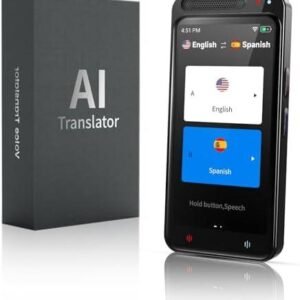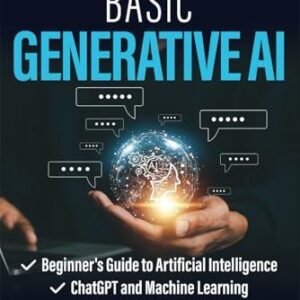In an era defined by rapid technological advancements, the realm of education is undergoing a transformative shift, fueled by the remarkable potential of artificial intelligence (AI). The traditional barriers of access—be they geographic, economic, or social—are becoming increasingly surmountable, thanks to innovations that leverage AI to create more inclusive learning environments. From personalized learning experiences to intelligent tutoring systems, AI is paving the way for a future where education is not just a privilege for the few, but a right accessible to all. In this article, we’ll explore how AI is unlocking educational opportunities across the globe, addressing disparities, and fostering a more equitable future for learners everywhere. Join us on this journey as we delve into the ways AI is reshaping education, helping to bridge the gaps that have long hindered access to knowledge and skills.
Table of Contents
- Exploring AI-Driven Learning Tools for Diverse Learner Needs
- Bridging Language Barriers: AIs Role in Global Education Accessibility
- Personalized Learning Paths: Tailoring Education with Artificial Intelligence
- Ensuring Equity in Education: Strategic Recommendations for Implementation
- In Retrospect
Exploring AI-Driven Learning Tools for Diverse Learner Needs
As educators seek to create more inclusive classrooms, AI-driven learning tools are paving the way for tailored educational experiences that address the unique needs of every learner. These technologies leverage sophisticated algorithms to analyze student performance and learning styles, allowing for personalized educational pathways. Notable AI applications include:
- Adaptive Learning Platforms: Tools that adjust content difficulty based on real-time performance metrics.
- Speech Recognition Software: Helping students with disabilities engage more effectively in their learning process.
- Language Translation Tools: Breaking down barriers for non-native speakers by providing seamless access to instructional materials in their preferred languages.
Furthermore, the implementation of AI in educational settings not only enhances individual learning experiences but also promotes collaborative environments that value diversity. As educators increasingly rely on data-driven insights, they can craft curricula that embrace varied intelligent strategies, catering to different paces and styles of learning. Key benefits of AI integration include:
| Benefit | Description |
|---|---|
| Engagement | Interactive AI tools foster greater student involvement. |
| Efficiency | Automated assessments save time for educators. |
| Accessibility | Resource availability enhances learning for all demographics. |
Bridging Language Barriers: AIs Role in Global Education Accessibility
In our increasingly interconnected world, the need for educational resources that cater to a diverse audience has never been more critical. Artificial Intelligence plays a pivotal role in breaking down language barriers that have long impeded access to quality education. Through real-time translation and adaptive learning systems, AI empowers students from various linguistic backgrounds to engage with educational content that was previously out of reach. This technology can instantly translate textbooks, online courses, and interactive learning materials, seamlessly bridging the communication gap between educators and learners across the globe.
The capability of AI to personalize educational experiences further enhances accessibility. With tools that assess learners’ proficiency and tailor content to their specific needs, AI not only helps in overcoming language obstacles but also in adapting to cultural nuances. Consider the following benefits:
- Instant Translation: Enables learners to grasp complex concepts in their native language.
- Customized Learning Paths: AI algorithms provide personalized resources based on individual learning pace and style.
- Collaborative Learning: Tools facilitate cross-cultural exchange among students from different countries.
To encapsulate the impact of AI on global education accessibility, we can summarize its contributions in a simple table:
| AI Contribution | Impact on Education |
|---|---|
| Translation Services | Removes language barriers for non-native speakers. |
| Adaptive Learning | Creates personalized learning experiences. |
| Data Analytics | Identifies areas where students struggle and offers targeted support. |
Personalized Learning Paths: Tailoring Education with Artificial Intelligence
Artificial Intelligence is revolutionizing education by enabling the creation of customized learning paths that cater to individual needs and preferences. By analyzing a student’s learning style, strengths, and areas for improvement, AI can provide tailored resources and exercises. This bespoke approach not only enhances engagement but also optimizes the learning process, allowing students to progress at their own pace. Key features include:
- Adaptive Learning Systems: Technology that adjusts content difficulty based on real-time performance.
- Personalized Content Recommendations: Algorithms that suggest materials suited to a student’s interests and academic history.
- Progress Tracking: Tools that monitor and visualize learning milestones to encourage self-reflection and motivation.
Furthermore, AI-driven platforms can analyze vast amounts of educational data to identify trends and gaps in knowledge, enabling educators to refine their teaching strategies. This data-focused approach fosters inclusivity as it ensures that resources are equitably distributed, meeting diverse needs. Consider the following comparative overview of traditional versus AI-enhanced personalized learning:
| Aspect | Traditional Learning | AI-Enhanced Learning |
|---|---|---|
| Customization | Generic curriculum | Tailored resources |
| Feedback | Delayed evaluations | Instant feedback |
| Engagement | Standardized methods | Interactive, diverse formats |
Ensuring Equity in Education: Strategic Recommendations for Implementation
Achieving equity in education requires a multifaceted approach that leverages technology while also addressing systemic barriers. Investing in teacher training on AI tools is crucial, ensuring educators are equipped to integrate these technologies effectively into their classrooms. Establishing partnerships between educational institutions and tech companies can foster innovation while providing resources aimed at underfunded schools. Furthermore, implementing data-driven strategies to monitor student outcomes can help identify and tackle disparities, allowing for tailored interventions that meet the unique needs of diverse learner populations.
To support these efforts, decision-makers should focus on affordability and accessibility of AI technologies, ensuring that all schools can benefit regardless of their funding status. A collaborative approach involving stakeholders at every level, including parents and community leaders, can enhance the relevance and application of AI tools in local contexts. This can be further supported by the establishment of public-private initiatives aimed at expanding infrastructure, such as high-speed internet access in rural and low-income areas. By fostering an inclusive environment, we can ensure that no child is left behind in the age of digital learning.
In Retrospect
As we stand on the brink of a new era in education, the potential of artificial intelligence to enhance global accessibility is both exciting and transformative. By breaking down traditional barriers and creating tailored solutions for learners around the world, AI is not just a tool—it’s a catalyst for change. From personalized learning experiences to scalable educational resources, the opportunities are boundless for those willing to embrace this technological revolution.
As we move forward, it is essential for educators, policymakers, and innovators to collaborate and harness AI’s capabilities responsibly, ensuring that no learner is left behind. Together, we can unlock the full potential of education in ways we have only begun to imagine. Let us continue this journey toward a more inclusive, accessible future where every individual, regardless of location or circumstance, has the opportunity to learn, grow, and thrive.
Thank you for joining us in exploring how AI is reshaping the educational landscape. We hope this discussion inspires your own insights and actions toward making education truly universal. Together, we can unlock the doors of knowledge for all.





